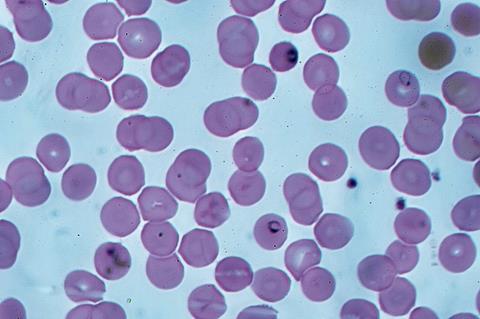Malaria, caused by a parasite transmitted to humans through an infected mosquito’s bite, is a leading cause of illness and death worldwide.

Most susceptible are pregnant women, displaced people and children in developing countries, according to the U.S. Centers for Disease Control and Prevention.
Treating the disease is difficult because Plasmodium falciparum, the deadliest malaria parasite, is resistant to nearly all malaria medications.
But in a study published today in Science Advances, researchers at Case Western Reserve University describe how they may have found a new target: a cholesterol-managing protein called PfNCR1.
Cholesterol control
That’s an important finding because a parasite needs just the right amount of cholesterol to survive and grow in its host, said Edward Yu, a professor of pharmacology at the Case Western Reserve School of Medicine and the study’s lead researcher. PfNCR1 acts like a transporter, he said, moving cholesterol around to keep the parasite’s membrane stable.
READ MORE: Global research uncovers critical weakness in malaria parasite
READ MORE: Malaria parasite generates genetic diversity using evolutionary ‘copy-paste’ tactic
Yu’s team found that a compound known as MMV009108 can physically block the transporter, preventing it from doing its job. This disrupts the parasite’s ability to control its cholesterol levels, potentially killing it.
“This breakthrough is a big step forward in developing new malaria treatments,” Yu said. “By focusing on PfNCR1, scientists could develop drugs that the parasite finds difficult to develop resistance to, advancing our fight against one of the deadliest and most persistent illnesses in the world.”
To better understand PfNCR1’s structure and identify proteins that directly interact with it, Yu and his team are now taking steps to study how PfNCR1 interacts with various inhibitors. This information could lead to a new approach of designing drugs to fight malaria more effectively.







No comments yet